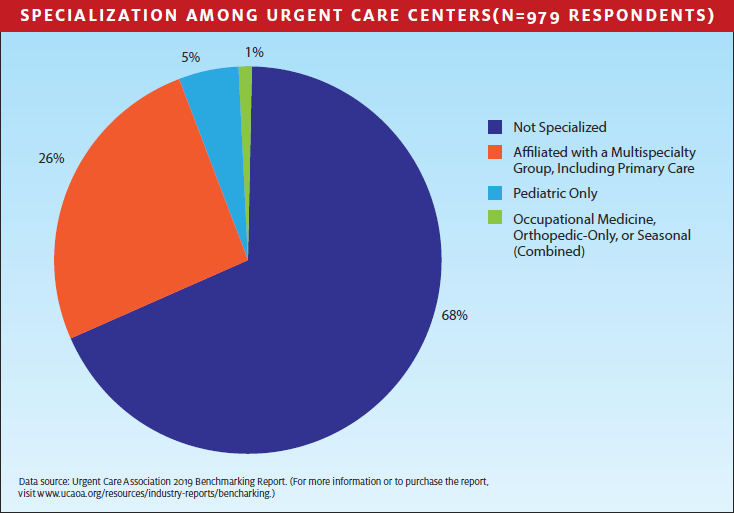Published on
Urgent care has historically been viewed as a setting where patients could present with anything short of life- or limb-threatening complaints (though even those parameters have been stretched in dire situations.) And that identity has served the industry well, as evidenced by nearly constant growth over several decades. As time wore on, though, it became evident that there are business opportunities to be had by addressing niches with special needs.
Occupational medicine is a prime example. Many urgent care centers serve the needs of local businesses and industries in administering pre-employment physicals, conducting drug screens,
and offering immunization services. Typically, this has been done as an offshoot of an overall urgent care operation.
While that’s still the case, largely, there is a slight—but growing—trend toward specialization within the industry, as revealed in the Urgent Care Association’s most recent benchmarking report. (Locations that offer pediatric-only urgent care are the most common, a this point.) Further, it’s become more common for urgent care centers to have an affiliation with multispecialty groups, including true primary care practices.
Check out the graph below to see a breakdown of how urgent care operators present themselves to the healthcare marketplace.
Data source: Urgent Care Association 2019 Benchmarking Report. (For more information or to purchase the report, visit www.ucaoa.org/resources/industry-reports/bencharking.)

